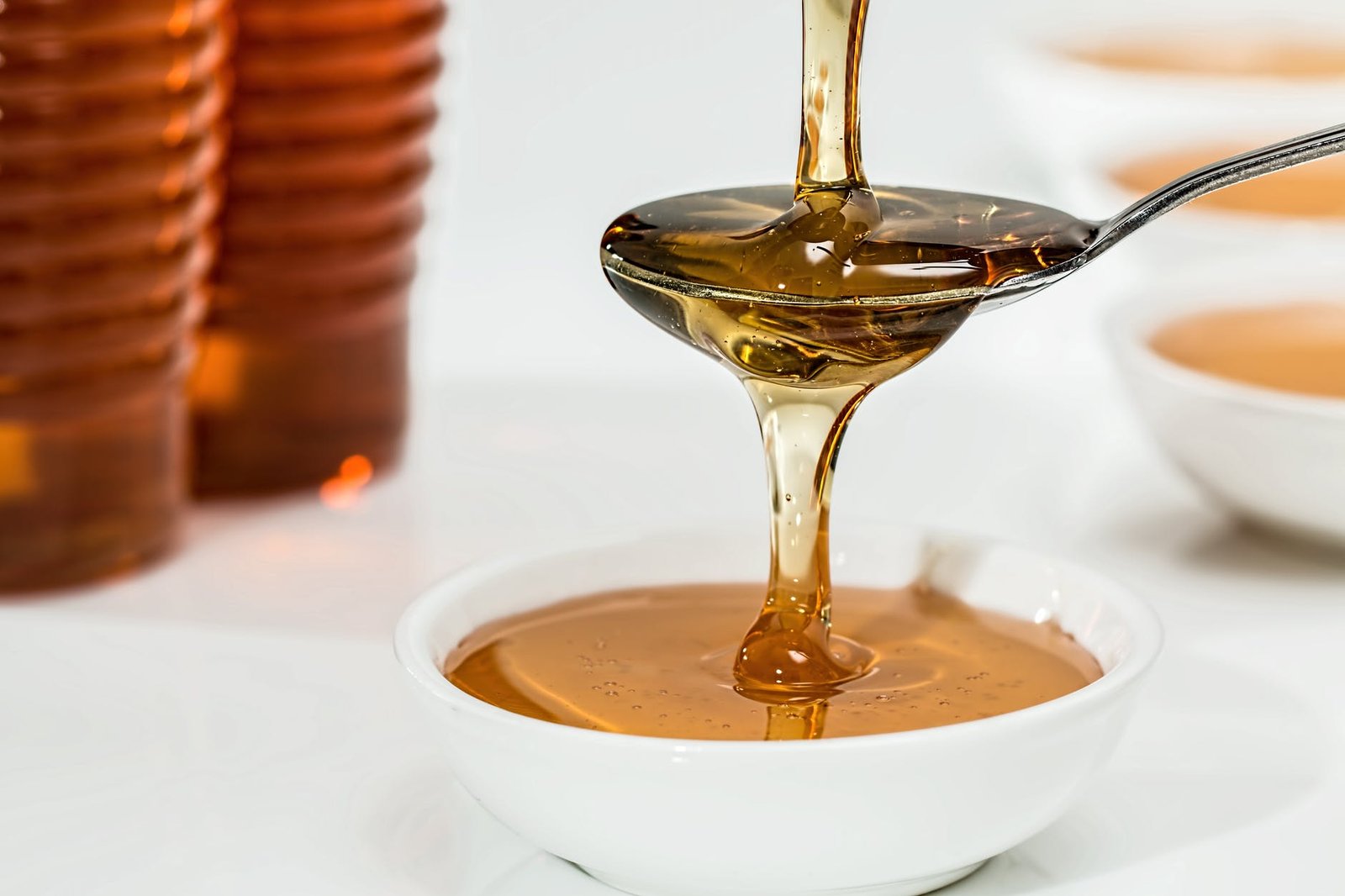Honey
Honey is known for its flavour and medical properties. Honey comes from the nectar of flowering plants, due to this bees that feed on specific plants make unique flavoured honey. The honeybees remove the nectar one drop at a time and return it to the hive. In the hive, it’s combined with enzymes produced by the worker bees and stored in honeycomb (hexagonal wax cells structure).
Most honey can be stored in the cupboard up to to a year but as long as the lid stays on and no water is added, honey will not go bad. In fact honey is the only food that doesn’t spoil due to its low moisture content. Honey can be used in place of sugar in many savoury and sweet dishes. It can be used in baking cakes and muffins, glazes, drinks, marinades and many more.
Difference between set and clear honey
Set honey is produced by churning and chilling to create a smooth soft finish while clear honey is gently warmed until all the sugars are dissolved. Eventually both set and clear honey will return to their natural granulated state. Honey purchased through bee-keepers and farmer’s markets tend to be raw.
Varieties of honey
Acacia honey: Is a clear, light and is slow to crystallise. Acacia is produced from nectar collected from black locust plant and it’s popular due to its mild, delicate floral taste and is great for sweetening drinks as it doesn’t alter the flavour.
Wild flower honey: Is a light, fruity and considered a sweet, medium honey. The taste and colour varies depending on the types of flowers nearby. This honey is made using the nectar of a variety of wild flowers nearby to the hive.
Set honey: This is honey that has been crystallised after being churned and chilled to create a soft smooth finish. It’s essentially the same as clear honey with no nutritional differences.
Raw honey: It’s honey in its most natural state and contains enzymes which add to its aroma. This is honey that comes straight from the hive which has not been heated or pasteurised but simply passed through a filter before being put into jars/containers.
Buckwheat honey: Has spicy and strong flavour which makes it perfect for marinades. It has antioxidant properties and an abundance of micro and micronutrients, which can protect your body and DNA from chemical and oxidative stress.
Blackberry honey: Honey that is deep, rich and has fruity flavour.
Clover honey: Is a light, floral and sweet honey. It has unique phenolic compounds and antimicrobial peptides which could be responsible for specific antioxidant and antimicrobial activity against Pseudomonas, Bacillus, Staphylococcus species
Blueberry honey: It has a slight tang and a fruity flavour.
Manuka honey: It has a slightly herbaceous taste and produced only from the manuka bushed in New Zealand. It contains methylglyoxal (MGO) and dihydroxyacetone antibacterial property, which is rated by strength – the higher the rating the better it is for you.
Clear/Blended honey: Means two or more types of honey have been mixed together and is most widely available honey on the shelves.
Alfalfa honey: It is a light honey with mild spicy and floral aroma. Is well known for it prebotic effects which promote intestinal bacteria and improve digestion.
Eucalyptus honey: Has a hint of menthol flavour and is derived from the flowers of eucalyptus. This honey acts as a powerful antioxidant and anti-inflammatory agent.
Sage honey: It’s known for its sweetening and antioxidant properties. It has antioxidant, antibacterial and digestive properties.
Lavender honey: is rich in amino acids, sugars, essential enzymes and phenolic compounds. It also has anti-fungal and antioxidant properties.
Rosemary honey: It’s widely used in European countries and is rich in antioxidant and kaempferol. Rosemary honey can be used in cosmetics and emulsions to lock the moisture in. It can also be used as a natural moisturising agent with a high therapeutic value.


